...page (forever) under construction...
This page cites the relevant journal articles published only. Other publications can be found here.
On-Going Research Projects
Safe Navigation for Biped Robots [2017-Present]
Viability-Based Navigation [2013-Present]
The following videos illustrates how a double integrator system can navigate in different types of workspaces (static, freezing or periodic) while being subject to different types of constraint (collision avoidance, visibility, velocity). Although the navigation scheme is purely reactive, the use of the Viability theory guarantees that the constraints are always satisfied and that the system is always safe.
 Viability-Based Guaranteed Safe Reactive Navigation - Plane Scenario.
Viability-Based Guaranteed Safe Reactive Navigation - Plane Scenario.
 Viability-Based Guaranteed Safe Reactive Navigation - Compactor Scenario.
Viability-Based Guaranteed Safe Reactive Navigation - Compactor Scenario.
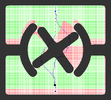 Viability-Based Guaranteed Safe Reactive Navigation - Revolving Door Scenario.
Viability-Based Guaranteed Safe Reactive Navigation - Revolving Door Scenario.
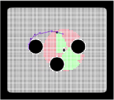 Viability-Based Guaranteed Safe Reactive Navigation - Pursuit Scenario.
Viability-Based Guaranteed Safe Reactive Navigation - Pursuit Scenario.
 Viability-Based Guaranteed Safe Reactive Navigation - Evasion Scenario.
Viability-Based Guaranteed Safe Reactive Navigation - Evasion Scenario.
Human-Robot Motion [2011-Present]
Inevitable Collision States [2003-Present]
 ICS-Avoid Benchmarking (IEEE Int. Conf. on Robotics and Automation 2009).
ICS-Avoid Benchmarking (IEEE Int. Conf. on Robotics and Automation 2009).
- S. Bouraine, T. Fraichard, and H. Salhi. Provably safe navigation for mobile robots with limited field-of-views in dynamic environments. Autonomous Robots, 2012. [pdf].
- Th. Fraichard and H. Asama. Inevitable Collision States. A Step Towards Safer Robots? Advanced Robotics, 18(10), 2004. [www].
Trajectory Deformation [2006-Present]
 Automated Wheelchair Navigation Using
Trajectory Deformation (PhD V. Delsart 2010).
Automated Wheelchair Navigation Using
Trajectory Deformation (PhD V. Delsart 2010).
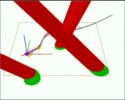 Teddy, a Trajectory Deformation Scheme (IEEE-RSJ
Int. Conf. on Intelligent Robots and Systems 2008).
Teddy, a Trajectory Deformation Scheme (IEEE-RSJ
Int. Conf. on Intelligent Robots and Systems 2008).
- Th. Fraichard and V. Delsart. Navigating Dynamic Environments with Trajectory Deformation. Journal of Computing and Information Technology, 17(1), March 2009. [www].
Trajectory Generation [2006-Present]
- Be patient...
Earlier Research Projects
Motion Prediction [2003-2009]
 Learning and Prediction of Motion with
Growing Hidden Markov Models (2009).
Learning and Prediction of Motion with
Growing Hidden Markov Models (2009).
- D. Vasquez, Th. Fraichard, and C. Laugier. Growing Hidden Markov Models: a Tool for Incremental Learning and Prediction of Motion. Int. Journal of Robotics Research, 28(11-12), November 2009 [www].
- C. Laugier, D. Vasquez, M. Yguel, Th. Fraichard, and O. Aycard. Geometric and Bayesian Models for Safe Navigation in Dynamic Environments. Intelligent Service Robotics, 1(1), January 2008. [pdf].
- D. Vasquez, Th. Fraichard, O. Aycard, and C. Laugier. Intentional Motion On-Line Learning and Prediction. Machine Vision and Applications, January 2008. [www].
Partial Motion Planning [2001-2009]
 PMP-Nav on the Cycab simulator (Int. Conf. on
Field and Service Robotics 2007).
PMP-Nav on the Cycab simulator (Int. Conf. on
Field and Service Robotics 2007).
 PMP-Nav on the Cycab (Eindhoven
demonstration 2007).
PMP-Nav on the Cycab (Eindhoven
demonstration 2007).
 Cybercar Cooperation for
Safe Intersection (IEEE Intelligent Transportation Systems
Conf. 2006).
Cybercar Cooperation for
Safe Intersection (IEEE Intelligent Transportation Systems
Conf. 2006).
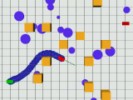 PMP (IEEE-RSJ Int. Conf. on Intelligent Robots and
Systems 2005).
PMP (IEEE-RSJ Int. Conf. on Intelligent Robots and
Systems 2005).
- K. Macek, D. Vasquez, Th. Fraichard, and R. Siegwart. Towards Safe Vehicle Navigation in Dynamic Urban Scenarios. Automatika, 50(3-4), November 2009. [www].
- R. Benenson, S. Petti, Th. Fraichard, and M. Parent. Toward Urban Driverless Vehicles. Int. Journal of Vehicle Autonomous Systems, 6(1/2), 2008. [pdf].
MDP-Based Navigation [2004-2008]
The purpose of this work is to study how the Markov Decision Process Theory
can be used to robustify mobile robot navigation.
To reach a given goal, a mobile robot first computes a motion
plan, i.e. a sequence of actions that will take it to its goal,
and then executes it. Markov Decision Processes (MDP) have been
successfully used to solve these two problems. Such approaches use a graph
representation of the robot's state space and their main advantage is that
they provide a theoretical framework to deal with the uncertainties related
to the robot's motor and perceptive actions during both planning and
execution stages. Unfortunately, their algorithmic complexity is
exponential in the number of edges of the graph which limits their
application to complex problems.
Our approach is to address this complexity issue by reducing the number of
states through aggregation techniques. We have proposed a MDP-based
planning method that uses a hierarchical representation of the robot's
state space (based on a quad-tree decomposition of the
environment). Besides, the actions used better integrate the kinematic
constraints of a wheeled mobile robot. These two features yield a motion
planner more efficient and better suited to plan robust motion strategies.
We have also focused on the execution stage. An execution scheme based
upon Markov Localisation has been defined and validated experimentally.
Central in this validation is the transition function (that encodes the
uncertainties related to the robot actions), and the sensors' model: a
learning procedure using a real robot and its sensors has been defined and
experiments with a Koala mobile platform has demonstrated the robustness of
the whole navigation approach.
- J. Burlet, Th. Fraichard, and O. Aycard. Robust Navigation Using Markov Models. Advanced Robotic Systems, 5(2), June 2008. [www].
Bayesian Occupancy Filter [2000-2006]
 Cycab Electric Vehicle Avoiding an Occluded Pedestrian
(Int. Journal of Robotics Research 2006).
Cycab Electric Vehicle Avoiding an Occluded Pedestrian
(Int. Journal of Robotics Research 2006).
 Bof-Based Tracking of People in a Shopping
Mall.
Bof-Based Tracking of People in a Shopping
Mall.
- C. Coue, C. Pradalier, C. Laugier, Th. Fraichard, and P. Bessiere. Bayesian Occupancy Filtering for Multi-Target Tracking: an Automotive Application. Int. Journal of Robotics Research, 25(1), January 2006. [www].
Continuous-Curvature Path Planning [1996-2004]
We are interested in computing collision-free paths for car-like vehicles
that better take into account their kinematic properties. Many standard
path planning techniques would compute paths made up of straight segments
connected with tangential circular arcs. The curvature of this type of
path is discontinuous so that if a car-like vehicle were to actually follow
such a path, it would have to stop at each curvature discontinuity in order
to reorient its front wheels.
Accordingly, we are primarily seeking to
compute paths with continuous curvature
profiles. To that end, we have
designed CC-Steer: it is a steering
method (a.k.a. a trajectory generation method) for car-like
vehicles, i.e. an algorithm planning paths in the absence of
obstacles. CC-Steer computes paths with:
- continuous curvature,
- upper-bounded curvature (to account for steering angle limits), and
- upper-bounded curvature derivative (to account for steering velocity limits).
CC-Steer is complete, i.e. it can connect arbitrary pairs of configurations. Besides it verifies a topological property that ensures that when it is used within a general motion-planning scheme, it yields a complete collision-free path planner. The coupling of CC-Steer with a general planning scheme yields a path planner that computes collision-free paths verifying the properties mentioned above. Accordingly, a car-like vehicle can follow such paths without ever having to stop in order to reorient its front wheels. Besides, such paths can be followed with a nominal speed which is proportional to the curvature derivative limit. The paths computed by CC-Steer are made up of line segments, circular arcs, and clothoid arcs. They are not optimal in length. However, it has been shown that they converge toward the optimal "Reeds and Shepp" paths when the curvature derivative upper bound tends to infinity. The capability of CC-Steer to serve as an efficient steering method within general path planning schemes has been demonstrated.
- Th. Fraichard and A. Scheuer. From Reeds and Shepp's to Continuous-Curvature Paths. IEEE Trans. on Robotics, 20(6), December 2004. [pdf].
Fuzzy Logic-Based Navigation [1993-2001]
 The purpose of this work is to study how Fuzzy Logic can be used for mobile
robot navigation. Fuzzy Logic has been used to develop the reactive
component of a navigation architecture for a car-like vehicle intended to
move in dynamic and partially known environments. This component is called
the Execution Monitor (EM). Its purpose is to generate commands for the
servo-systems of the vehicle so as to follow a given nominal trajectory
while reacting in real-time to unexpected events. EM is designed as a
fuzzy controller. A behaviour-based approach is used to set up the fuzzy
rule base: the overall behaviour of the vehicle results from the
combination of several basic behaviours (trajectory following, obstacle
avoidance, etc.). This approach permits an easy and incremental
construction of the fuzzy rule base and also to develop and test the basic
behaviours separately. EM has been implemented and tested on a real
computer-controlled car equipped with sensors of limited precision and
reliability. Experimental results obtained with the prototype vehicle have
demonstrated the capability of EM to actually control a real vehicle and to
perform trajectory following and obstacle avoidance in real outdoor
environments by using simple fuzzy behaviours relying upon low-resolution
sensor data.
The purpose of this work is to study how Fuzzy Logic can be used for mobile
robot navigation. Fuzzy Logic has been used to develop the reactive
component of a navigation architecture for a car-like vehicle intended to
move in dynamic and partially known environments. This component is called
the Execution Monitor (EM). Its purpose is to generate commands for the
servo-systems of the vehicle so as to follow a given nominal trajectory
while reacting in real-time to unexpected events. EM is designed as a
fuzzy controller. A behaviour-based approach is used to set up the fuzzy
rule base: the overall behaviour of the vehicle results from the
combination of several basic behaviours (trajectory following, obstacle
avoidance, etc.). This approach permits an easy and incremental
construction of the fuzzy rule base and also to develop and test the basic
behaviours separately. EM has been implemented and tested on a real
computer-controlled car equipped with sensors of limited precision and
reliability. Experimental results obtained with the prototype vehicle have
demonstrated the capability of EM to actually control a real vehicle and to
perform trajectory following and obstacle avoidance in real outdoor
environments by using simple fuzzy behaviours relying upon low-resolution
sensor data.
 Ligier Avoiding Unexpected
Obstacle (IEEE-RSJ Int. Conf. on Intelligent Robots and Systems
1995).
Ligier Avoiding Unexpected
Obstacle (IEEE-RSJ Int. Conf. on Intelligent Robots and Systems
1995).
- Th. Fraichard and Ph. Garnier. Fuzzy Control to Drive Car-Like Vehicles. Robotics and Autonomous Systems, 34(1), January 2001. [www].
State-Time Space
- Th. Fraichard. Trajectory Planning in a Dynamic Workspace: a `State-Time Space' Approach. Advanced Robotics, 13(1), 1999. [www].
- Th. Fraichard. Trajectory Planning Amidst Moving Obstacles: Path-Velocity Decomposition Revisited. Journal of the Brazilian Computer Science Society - Special issue on Robotics, 4(3), April 1998. [www].
Hybrid Navigation Architecture [1996-1999]
 The purpose of this work is to develop a control architecture endowing a
car-like vehicle moving in a dynamic and partially known environment with
autonomous motion capabilities. Like most recent control architectures for
autonomous robot systems, it combines three functional components: a set of
basic real-time skills, a reactive execution mechanism and a decision
module. The main novelty of the architecture proposed lies in the
introduction of a fourth component akin to a meta-level of skills: the
sensor-based manoeuvres, ie general templates that encode high-level expert
human knowledge and heuristics about how a specific motion task is to be
performed. The concept of sensor-based manoeuvres permit to reduce the
planning effort required to address a given motion task, thus improving the
overall response-time of the system, while retaining the good properties of
a skill-based architecture, ie robustness, flexibility and reactivity. The
paper focuses on the trajectory planning function (which is an important
part of the decision module) and two types of sensor-based manoeuvres,
trajectory following and parallel parking, that have been implemented and
successfully tested on a real automatic car-like vehicle placed in
different situations.
The purpose of this work is to develop a control architecture endowing a
car-like vehicle moving in a dynamic and partially known environment with
autonomous motion capabilities. Like most recent control architectures for
autonomous robot systems, it combines three functional components: a set of
basic real-time skills, a reactive execution mechanism and a decision
module. The main novelty of the architecture proposed lies in the
introduction of a fourth component akin to a meta-level of skills: the
sensor-based manoeuvres, ie general templates that encode high-level expert
human knowledge and heuristics about how a specific motion task is to be
performed. The concept of sensor-based manoeuvres permit to reduce the
planning effort required to address a given motion task, thus improving the
overall response-time of the system, while retaining the good properties of
a skill-based architecture, ie robustness, flexibility and reactivity. The
paper focuses on the trajectory planning function (which is an important
part of the decision module) and two types of sensor-based manoeuvres,
trajectory following and parallel parking, that have been implemented and
successfully tested on a real automatic car-like vehicle placed in
different situations.
- C. Laugier, Th. Fraichard, Ph. Garnier, I. E. Paromtchik, and A. Scheuer. Sensor-Based Control Architecture for a Car-Like Vehicle. Autonomous Robots, 6(2), April 1999. [www].
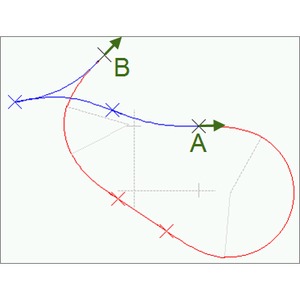




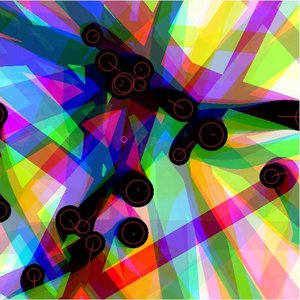

 Time to Danger, an Alternative to Passive Safety for the Locomotion of a Biped Robot in a Crowd (submitted to IEEE Int. Conf. on Robotics and Automation 2023).
Time to Danger, an Alternative to Passive Safety for the Locomotion of a Biped Robot in a Crowd (submitted to IEEE Int. Conf. on Robotics and Automation 2023). Provably Safe Navigation for Mobile Robots with Limited Field-of-Views in Dynamic Environments (Autonomous Robots 2012).
Provably Safe Navigation for Mobile Robots with Limited Field-of-Views in Dynamic Environments (Autonomous Robots 2012).